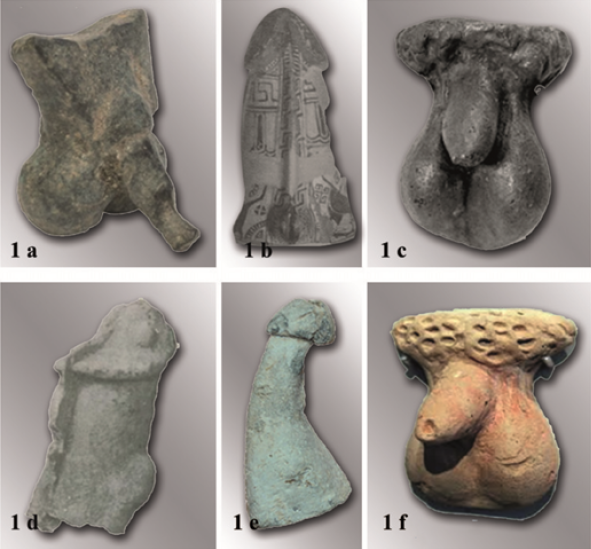
34. Avrupa Üroloji Kongresi, 15-19 Mart 2019 Barcelona
Guner E. , Seker K.G. , Sam E.
University of Health Sciences, Bakirkoy Dr. Sadi Konuk Training and Research Hospital, Dept. of Urology, Istanbul, Turkey
Introduction & Objectives: To treat diseases, people went to the temples of various gods and goddesses that were believed to heal, prayed them and offered various anatomical votives representing organs they wanted to heal. We aimed to reveal the diseases by investigating the ones that give information related to the disease among the offered male genital organs to the gods in the temples.
Materials & Methods: Ancient healer gods and ancient male urogenital diseases have been investigated. Male urogenital votive samples representing a disease in archeology museums and galleries around the world have been researched and examined by visit and web based.
Results: In ancient ages, many deities were believed to have healing powers. Deities such as Zeus, Apollon, Asklepius, Artemis, Eileitheia in ancient Greece, Jupiter, Apollo, Aesculapius, Diana, Minerva, Liber and Juno in ancient Rome used to cure people in temples of their names. The discovery of almost all kinds of organ votives in the temples has shown that under the guidance of the gods, priest physicians tried to heal all kinds of diseases. Majority of male genital organs explored in temples are healthy and normal. Yet, a few of them indicated some urogenital diseases. Among these samples, problems such as phimosis, hypospadias, varicocele, penile hemangioma, penile curvature, pubic hair defects, or skin problems were identified. Figure1 a,b,c,d,e,f). Offerings with no indication of disease are thought to be sacrificed either as were easily found or simply pointing to the organ wanted to be healed or has healed. It also seems likely that these healthy votives are offered to the gods as an expressions of gratitude after healing.

Conclusions: It has been found that only a small number of anatomic genital offering samples give information about the disease. It’s not clear for which disease most of them were offered to god. It is because there is no mention of a disease on the offering. It is likely that a patient who could not get the treatment he expected through an offering without information of the illness would offer another depicting exactly what their illness was to draw the attention of the gods. We presume that these few examples describing the disease clearly, had been done by craftsmen by specifically describing either from the beginning or afterwards.
Eur Urol Suppl 2019; 18(1);e1286

